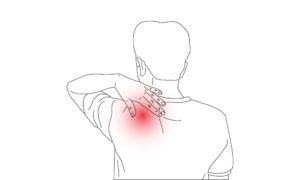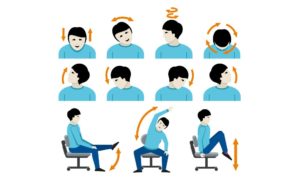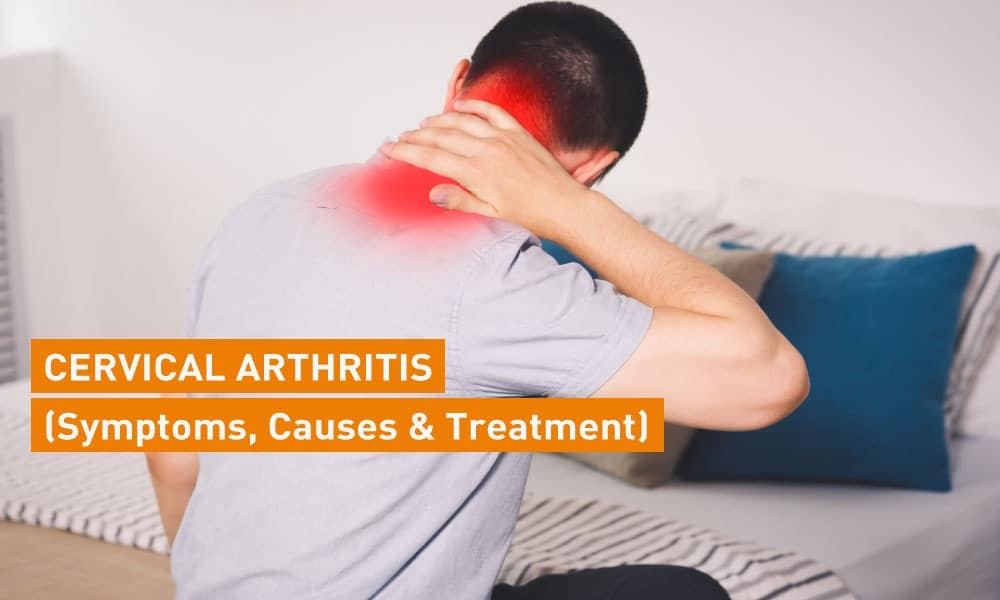Cervical Spondylosis (Neck Arthritis) – Symptoms, Causes & Treatments
, 5 years ago
About 2/3
rd of the population may suffer from
neck pain at some point in their life. People who have neck pain may have specific or non-specific neck pain wherein the symptoms are caused due to mechanical (posture) or non-mechanical (disease condition) basis. However, when mechanical factors are prominent, the condition is called cervical spondylosis, where degenerative changes begin in the intervertebral discs and start to irritate the soft tissues around the spine.
Cervical
spondylosis is the medical term for age-related wear and tear of the vertebrae and discs in the neck, and the changes that occur over time leading to neck pain, neck stiffness, etc. At times, this condition is called arthritis or osteoarthritis of the neck. It may also be referred to as arthritis of the neck, cervical osteoarthritis or degenerative osteoarthritis.

What does cervical or neck arthritis feel like?
Neck arthritis is a normal process of ageing and hence does not cause many symptoms in the majority of the people. However, it may cause neck pain and other symptoms which might tend to come and go. In some people, the surrounding muscles, ligaments or nerves may also get irritated or pressed by the degenerative changes (such as bone spurs or disc bulge) that are present in the spine.
The symptoms of cervical or neck arthritis can generally range from mild to severe. The most common symptoms are listed below: –
- Pain
- Stiffness
- Numbness or tingling
- Dizziness
- Headache
- Muscle spasms in neck and shoulders
- Grinding or popping or clicking sound while turning your neck
You may also feel two different types of pain – axial pain and radicular pain.
Axial pain is felt in the cervical spine i.e. part of the spine that belongs to the neck and sometimes it spreads to the upper back.
Radicular pain radiates along the nerve course which is usually caused due to irritated nerves.
The pain may radiate down the arms causing abnormal sensations like tingling, numbness or heaviness. In severe cases, it may affect reflexes, muscle strength and loss of sensation. However, it is a rare symptom of cervical arthritis.
What causes cervical or neck arthritis?
Like our skin and organs, the structures around our spine also undergoes a lot of changes as we grow old. The bones overgrow resulting in spurs (outgrowth), the disc gets dehydrated or bulged and nerve loses its flexibility. The most common cause is overuse resulting in wear and tear of the cervical spine. The process of degeneration progresses over time.
Sometimes, other factors such as stress or anxiety, sprain, strain, sleeping in an awkward position, trauma, and whiplash lead to early degeneration.
The causes of cervical or neck arthritis are as follows: –
- Weak or overused muscles of the neck – When you sit at a position for a long time in an awkward position with tensed muscles can cause pain and stiffness in your neck or shoulder. Certain activities like painting a ceiling, carrying heavy loads, riding a bike or swimming.
- Wear & tear of the cervical spine that happens over time
- Whiplash / Injury – It is caused due to collision or accident.
- Genetics – Sometimes the problem runs in families.
- Occupation – Jobs that involve several repetitive motion or heavy lifting tend to put more stress on the cervical spine
- Overweight – People who are overweight tend to develop osteoarthritis. Excess weight means more stress on the joints, which can lead to inflammation.
The risk of neck arthritis increases with age. Other risk factors that lead to early degeneration or arthritis include smoking, family history, occupation, neck injury, depression, anxiety, heavy lifting, straining your neck and if one is exposed to a lot of vibration like truck drivers.
What are the types of arthritis that affect the neck?
Cervical spondylosis can progress or lead to cervical radiculopathy or cervical myelopathy, in some cases. Three distinct clinical syndromes that can result from cervical spondylosis are described below: –
- Cervical Radiculopathy – It’s commonly caused due to cervical spondylosis. When the root of a nerve gets damaged while coming out from the spinal cord in the neck area, cervical radiculopathy occurs. The symptoms include numbness, pins and needles besides neck pain and they generally affect both arms but usually worsen in one arm.
- Cervical Myelopathy – As the vertebral discs degenerate or wear out with time, the spinal cord gets pressurized or damaged as the canal gets narrower from arthritis and disc protrusions. This compression leads to worsening neck pain. The symptoms include difficulty in holding something by hand, loss of strength in hand, walking, reduced sensation in hands, altered reflexes and bladder problems.
- Axial Joint Pain – It represents painful joint dysfunction. It refers to pain along the back of the neck and remains localized to the neck and surrounding structures. It does not involve dysfunction of the arms, hands, fingers or other body regions. It is important to distinguish axial neck pain from the other two conditions. The symptoms include pain in the posterior neck that can travel to the base of the skull, shoulder or shoulder blade, neck stiffness, and headaches.
How is Cervical Arthritis diagnosed?
Your doctor may ask you to do a blood test to find out if the rheumatoid factor is present or not as it indicates inflammatory arthritis. You might be asked to carry out the following tests by your doctor to do a proper diagnosis.
If it is still not diagnosed then, the following tests may be recommended –
- CT (Computed tomography) Scan
- Myelogram – a type of CT scan
- Electromyography (EMG) – nerve function test
What are the treatment options for cervical arthritis?
The treatment for cervical arthritis depends on the severity of symptoms and how often they disrupt your everyday life. If one has neck spasms, then muscle relaxants may be helpful.
Common treatment methods are as follows: –
- Take proper rest when symptoms flare.
- Cold/Heat therapy will help minimize inflammation.
- Oral medications/painkillers such as Non-steroidal anti-inflammatory drugs like ibuprofen, acetaminophen.
- Physical therapy helps in alleviating symptoms.
- Invasive therapy (acupuncture, dry needling)
- Pain injection (steroids)
Another best option of treatment is using spine cell repair technology that utilizes frequency-specific microcurrents to reduce pain and inflammation without medications.
Can I treat it at home?
You may perform some basic changes to your lifestyle to moderate the symptoms but cannot treat it at home. Follow these tips to get relief from cervical arthritis or neck arthritis –
- Maintaining a good posture may help.
- Using a firm supportive pillow may help while sleeping.
- Exercise and stay active.
- Massaging
Exercises to relieve neck pain or neck arthritis (Cervical Arthritis)

A wide array of neck-stretching exercises can help in relieving stiffness and pain. Below are a few basic, simple neck exercises that you may follow to ease the symptoms of neck arthritis.
Repeat the above exercises twice a day to alleviate pain or stiffness in the neck. However, maintenance is the key to the treatment as there is no reversal of the condition.
Takeaway
Neck pain is quite common but, in most cases, it isn’t a serious problem and mostly gets resolved on its own within a few weeks. You may be able to recover completely within the 4-6-week period. However, if your neck pain persists then you should seek medical help. Mostly, cervical arthritis responds well to medicines and physical therapy.



 A wide array of neck-stretching exercises can help in relieving stiffness and pain. Below are a few basic, simple neck exercises that you may follow to ease the symptoms of neck arthritis.
A wide array of neck-stretching exercises can help in relieving stiffness and pain. Below are a few basic, simple neck exercises that you may follow to ease the symptoms of neck arthritis.